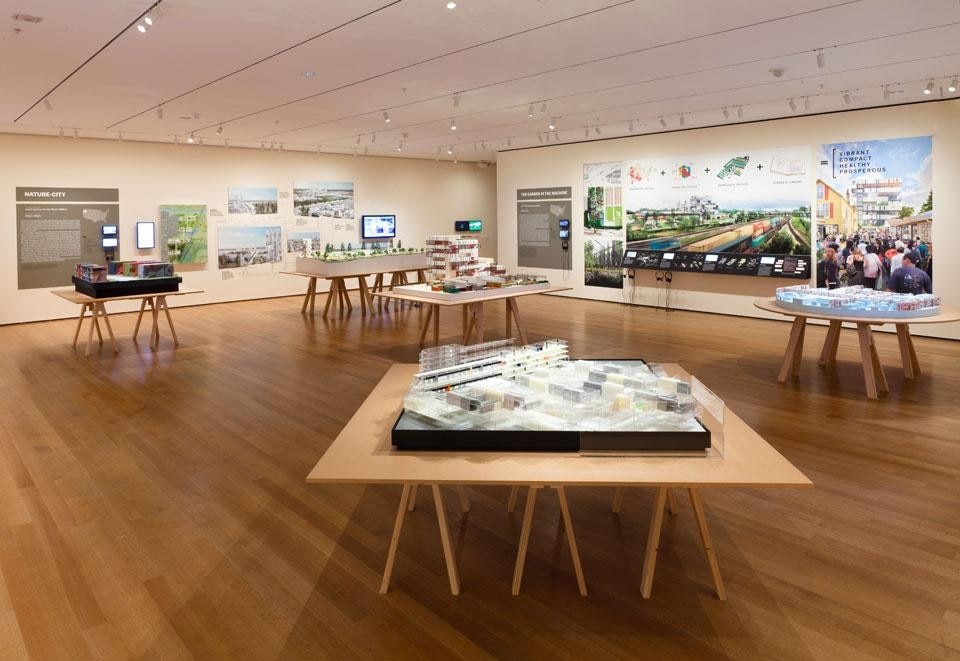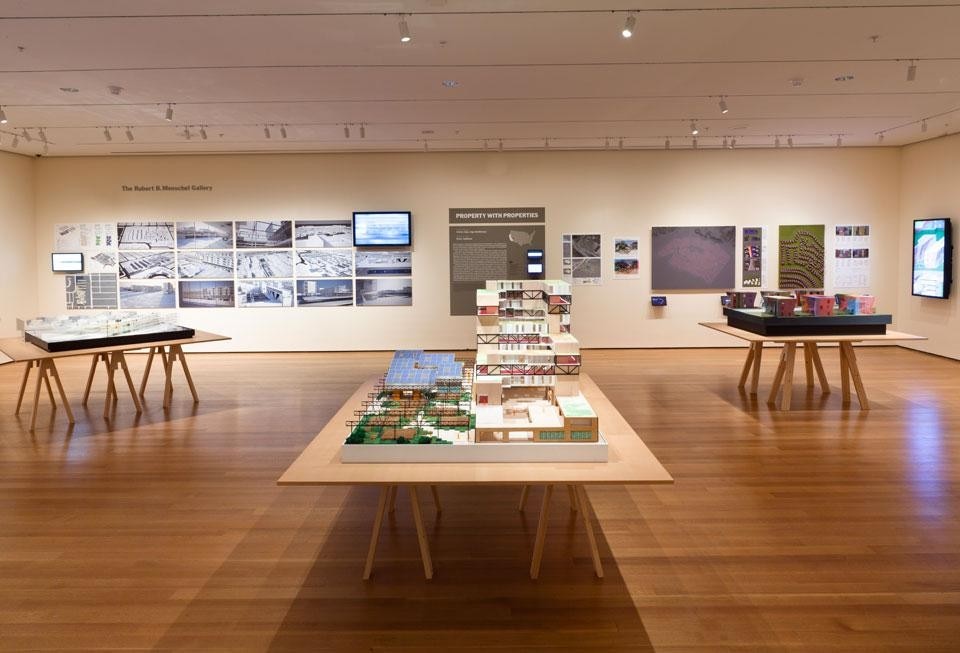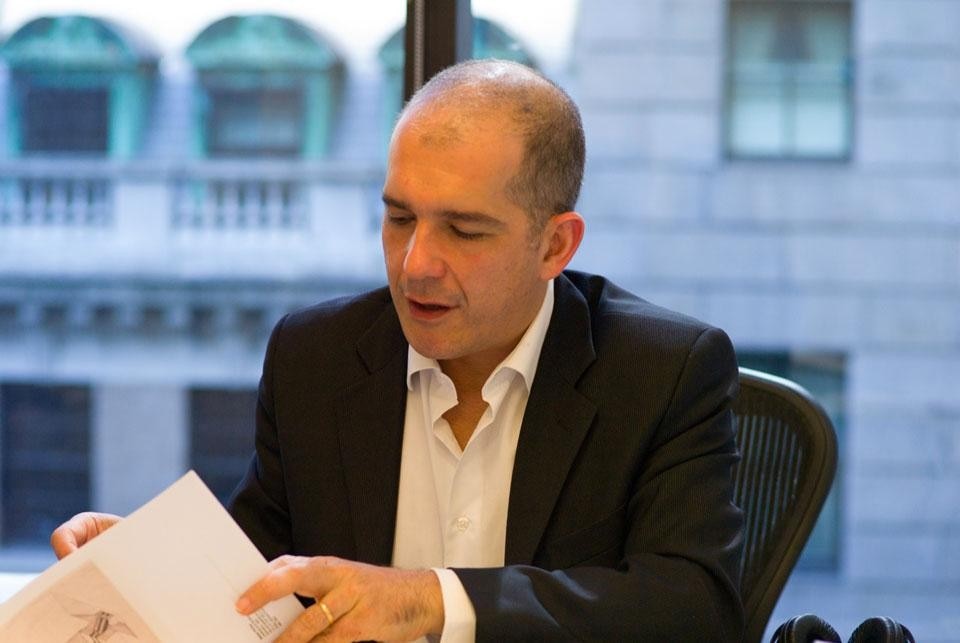Kazys Varnelis: One of your most remarked-upon statements is "curating is the new criticism." How do you set about this in curating?
Pedro Gadanho: There are several critical issues in that phrase.
One is the demise of criticism itself. Now that we spend our time reading over the Internet, criticism faces a visual culture and has trouble getting its messages across.
Curating uses the same tools as the Internet and television to communicate. An exhibition is an audiovisual operation. We can mobilize materials to which the general public can react to more effectively than criticism can.
Criticism is a matter of getting the critical function of architecture, of how architects reflect on the world, to a wider public while also bringing critical ideas to bear on the discipline. As an activity, curating can be layered to include both, communicating about a practice like that of architecture at a surface level at the same time as it provides deeper levels of critical content through the texts it originates, either in the space of the exhibition or in the catalog. I am influenced by Umberto Eco's notion of the "open work" in which he suggests that in one work you can address different audiences with differing cultural baggage, allowing them to respond to what is there in their own ways. In MoMA most of the audience is not architectural but you still have to respond to the discipline. So here there are two levels, one with regards to the discipline and one directed at the function of architecture within society.

In my earlier work as a curator, I focused on practice more than buildings and practice is still more interesting to me than its finished product. By analyzing practice you are analyzing attitudes, you are analyzing culture, you are analyzing the very issues that reveal the profession of architecture as it is today. So I was always interested in what originates practice, what characterizes practice, what are the problems of practice, what are its urban consequences?
By focusing on practice rather than on the end product, you are able to reach all these emerging aspects that reflect different ways of understanding architecture. If in contemporary art, artists are no longer characterized by the medium they use and navigate across different media easily, then maybe in architecture we are also coming to recognize that we could use different approaches—not just the traditional built structure—to contribute to society through critical reflection, questioning or rebuilding that society. As with artists today, the results might appear in video or in drawing, used metaphorically. I am more interested in the outcome of different practices, and not in being tied to the idea of building.
I am interested in architecture becoming more of a cultural field than a service profession. I sense a split between a part of the profession dedicated to technical service and a part operating in ways more similar to what has been going on in art lately. Now this is not to say that architecture equals art or that architecture is artistic. That is an old discussion and it leads to some very uninteresting dead ends.
How are you embodying this in your curation at MoMA?
In September, my first perspective on the collection takes place in the form of a show on political attitudes in architecture. I think it embodies some of the critical questions I was referring to earlier. We have to recognize how architects are still able to reveal and offer a political position at a moment when the profession at large seems subsumed by economical power, just as in general, political decision making seems dominated by the economy. By looking back at the collection and adding some new acquisitions from a younger generation, I hope to reveal that architects do not just represent power but rather have the opportunity to make critical commentaries on reality. Consider that in the 60s there was radical architecture, in the 70s there were architects like Tschumi or Koolhaas using fiction as a way to embody dystopia, and coming to our present moment there are so many young people trying to engage again with social issues, questions of community, and the ability to generate meaningful architecture under of very low budget conditions.
For me, these are all possibilities of the political. I want to show how this relationship of architecture and the political changes over time and is always an open situation. By the mere fact that you have a position, even if it is to refuse the architectural intervention, like Lacaton & Vassal did at a given moment, you are being absolutely political.

Yes, since the new generation was taught right in the midst of the star system, they felt they had to react to that, to architecture as a signature game, a branding device for the corporate world. This generation felt that they would have to do something else.
I remember always hearing from people, like my father, outside the profession who saw it as a totally cannibalistic profession that was always backfiring against itself. If you run your offices with unpaid and exploited interns, they will either grow to hate the system or will wind up replicating the system. It's constantly destroying architecture from within because professionals don't seem to have self-esteem towards their own activity. But now young people are refusing the star system and the whole route of working for a star, and instead are working through different channels.
Is starchitecture a complete misstep then?
It's not that starchitecture doesn't have a value. In fact I would love to have an exhibit that showed the public how the stars become stars. Starchitecture is a complex machine that responds to a large-scale global demand. Twenty years ago it would be difficult to imagine. These architects that became stars were great at creating something new and unprecedented, producing an imagination of limitless newness.
However, this system also creates expectations of rapid obsolescence. Everything is weirder than what came before. At a certain point, however, you know that the next project is going to be just another extravagant shape that adds on to the catalog of extravagant shapes that comes before. Just as soon as you settle into a formula, even when the formula is diversity, and you respond in the same way around the world, people start getting bored with it. First the younger architects get bored, then the clients, then you're through. The system eats its own.
That's the system of consumption. It's no accident that the rise of the star system is parallel to the rise of the consumption system in western society over the last twenty years. In the 1990s and the 2000s, we reached a peak of consumption as individuals. If this is coming to an end, and I hope it is, then we will have to find other ways of looking at architecture instead of the endless production of new built structures. Which, by the way, is not saying that we should take on a conservative attitude, either…
I think that it is important that you are bringing up the relation of the market to the star system. The Foreclosed show now at MoMA places at the single family house at the epicenter of the housing crisis, but suggests starchitecture was complicit as the public face of the delirious boom. The endless proliferation of the new was a kind of economic exuberance, a promise that the good times would never end. It's finally starting to hit a wall: the New York Times recently published an article about how apartments in starchitect-designed buildings are no longer selling so readily.
As I was saying, the system of consumption chews something up and spits it out when its on to the next tasty morsel. After it has been chewed, something is not so much dated but rather it is useless. In speaking of trends in architecture, we have to be aware that they are part of this consumption system, always looking for something new.
At a public venue like MoMA, of course, there is a danger of falling into that. We have to be aware of the risks involved, but we can find ways to get the most of it. That's where the critical message is most important. For example, over the last ten or fifteen years, artists have been able to reach bigger audiences with critical approaches. In this sense, it is also fundamental to architects to destabilize the system of consumption that is in place.
In September, my first perspective on the collection takes place in the form of a show on political attitudes in architecture. We have to recognize how architects are still able to reveal and offer a political position at a moment when the profession at large seems subsumed by economical power, just as in general, political decision making seems dominated by the economy


